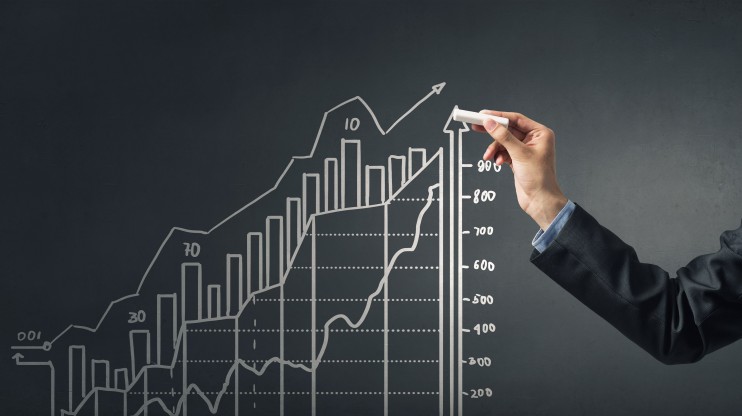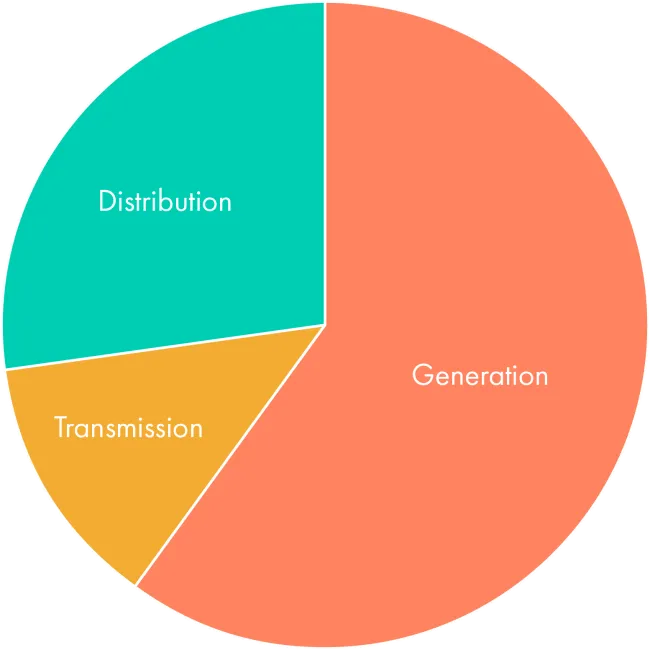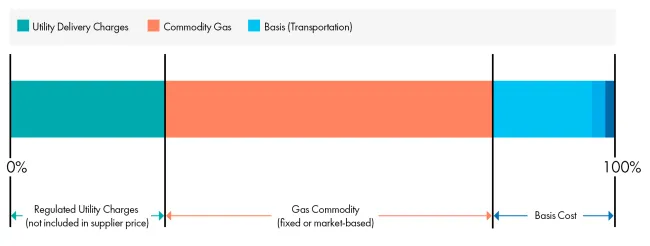Have Questions? We’re Here to Help!
Discover more about improving facility performance while reducing costs.

Assessing risk in your energy spend can be complicated but by understanding what makes up your energy pricing—whether electricity or natural gas —and the factors that influence it, is the first step to understanding how you can mitigate long-term risk with your energy procurement strategy.
The price you pay for electricity is comprised of the charge from the utility and the flow of power to your home or business.
The utility charge generally reflects the cost to build, finance, maintain, and operate power plants and the electricity grid (the complex system of power transmission and distribution lines), whereas the flow of electricity is the product you are buying.
The diagram below is an illustration of how each component makes up the total cost of electricity. The regulated delivery charges—transmission and distribution—are set by the utility company, whereas the remaining components, the orange slice, make up the cost of generation, which is where your opportunity lies.
Depending on your procurement strategy, some or all these supply components may or may not appear as separate line items. Also, these elements make up all supply prices, whether part of a competitive supply price or the utility’s basic service.

To put it in simple terms, there are some utility costs you can’t control. These include:
On the other hand, within some electricity price components, you can have an impact and an energy expert can help you maximize your opportunity therein.
And now, let’s talk about something a little more complex.
Generation is the electricity that comes from sources available to you on your local power grid. It is generally comprised of these components, although the percentage of each varies by state and utility (i.e. ISO-NE, PJM, ERCOT, etc.) An energy broker, like Mantis, can help you get the best possible price for these components:
The portions of generation over which you have less control, outside of generating your own power on-site include:
The diagram below shows every component that makes up the total cost of natural gas. The regulated delivery charges are set by your utility company; the remaining components make up the cost of generation, again, known as supply.
Even though these charges may not show up as separate line items on your invoice, you pay these charges whether you are on your basic service through the utility or if you’re buying from a competitive supplier.

The infrastructure costs to move the natural gas by pipeline from where it is produced or stored to local natural gas distribution utilities and the cost to deliver it to consumers.
Generation (the natural gas that flows to your house or business)
The cost of energy is affected by many factors, both on a microeconomic scale (basic supply and demand) to more convoluted macroeconomic ones.
These factors can apply pressure on both supply and demand in one or more of four ways:
More specifically, these factors can include:
Microeconomic Influences
Macroeconomic Influences
There are a lot of things you can do as a building owner or operator to maximize the opportunities within your energy contracts for both electricity and natural gas but, as noted above, there are also a lot of factors at play locally and globally. These considerations are all difficult to weigh. A professional energy consultant can help your peer into the future and strategize to ensure you’re taking on an amount of risk that’s manageable for your organization.
In the final blog in this series, we’ll explore Demand Response and how you can leverage it to directly impact your energy spend.
Discover more about improving facility performance while reducing costs.